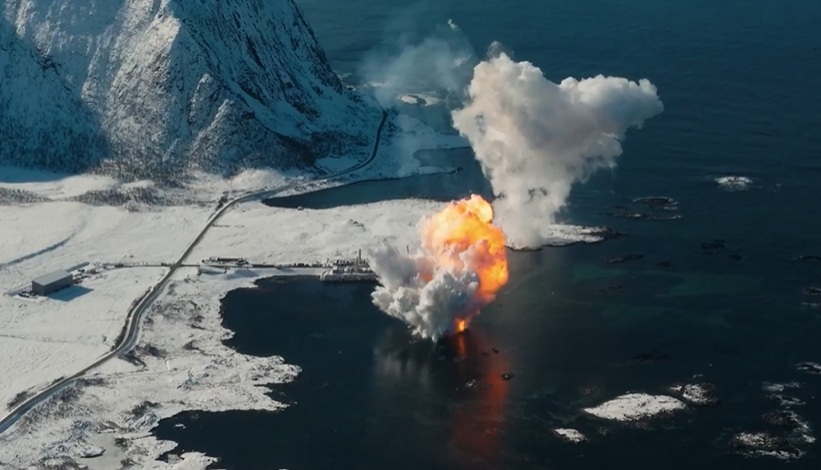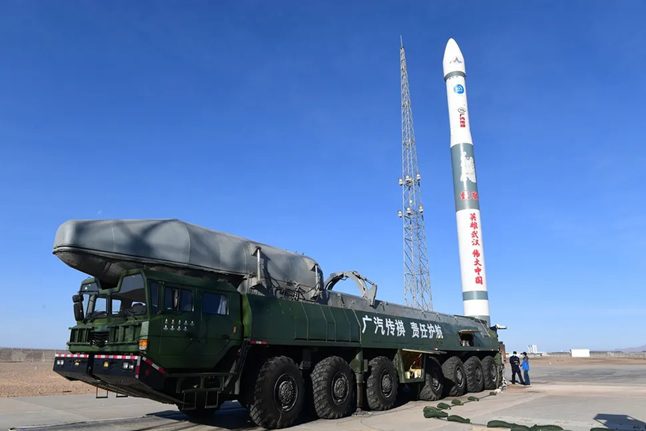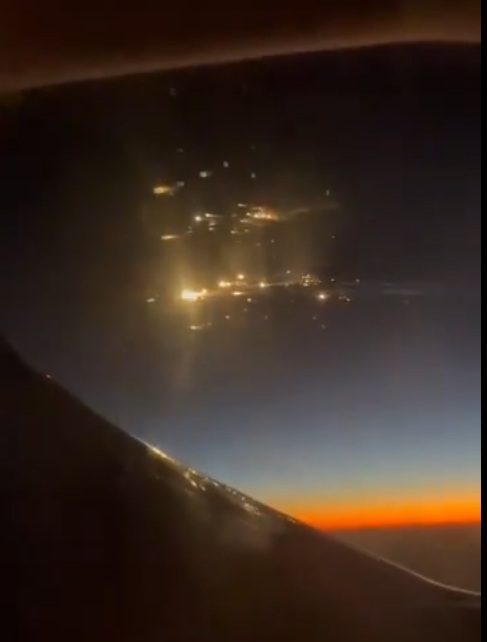The maiden flight of Spectrum ended in a spectacular explosion against the dramatic icy backdrop of Andøya Spaceport, Norway.
Footage of Spectrum’s fiery explosion punctuating the remote wilderness of Andøya was quickly picked up by news outlets internationally. This was unsurprising given that the stunning scenery conveyed a cinematic feel. Perched on the edge of Arctic Norway, Andøya Spaceport lies between a rugged mountain range with snowy peaks, and the icy expanse of the Norwegian Sea.
Visuals aside, however, the launch was not especially newsworthy in the context of maiden launches. As the Slingshot Seradata database data shows, the first (maiden) flights of new rockets have a failure rate of 45 per cent.

ISAR Spectrum rocket explodes on impact with the sea. Courtesy: ISAR/Nasaspaceflight
https://x.com/NASASpaceflight/status/1906340191083581704
Rocket specs
Spectrum is a two-stage launch vehicle operated and developed by Isar Aerospace, a German company, and measuring 28 metres.
The new-entrant small rocket is powered by LOX/Liquid Propane and designed to carry 1,000 kg to low Earth orbit (LEO) or 700 kg to a Sun-synchronous near polar one.
The rocket’s first stage is equipped with nine Aquila rocket engines. Its second (or upper) stage has a single Aquilla engine that is vacuum optimised.
The launch
After a series of delays due to high winds, Spectrum was ignited and lifted off at 1030 GMT on 30 March.
The launch initially seemed successful, until about 21 seconds in when the first stage seemed to exhibit gimballing over-control.
This carried on for a further ten seconds until the engine appeared to be extinguished. It was later confirmed that the automatic flight safety system shut the first-stage rocket engines off. With the upper stage still attached, Spectrum then pitched over and fell back forlornly to Earth – or rather into the sea. The rocket exploded spectacularly on impact.
The flight carried an instrumented upper stage measuring vibrations and acceleration loads that would be experienced by an actual payload, when one is eventually carried.
A full investigation is under way.
The significance for Europe
European nations have launched orbital rockets before – albeit from distant territories such as Kourou in French Guiana. However, they have long sought to have a launch site on European soil.
Spaceport Cornwall, a horizontal launch site in the UK, claimed the accolade for that in 2023 but its Virgin Orbit lift-off ultimately ended in failure. Hopes were high that Andøya spaceport’s first launch would be more successful. Sadly, it was not to be – although ISAR’s CEO and Co-founder Daniel Metzler has claimed the launch “met all our expectations” and was “a great success”. Metzler referred to the vehicle’s first stage ignition, lift off and 30 second flight. Video footage showing the rocket bursting into flames as it came falling back to Earth, instead of heading into orbit, makes the German firm’s declaration a tad unconvincing.
Early flight failure rates for new rockets since 2010 (Source: Slingshot Seradata Database)
| Launch Vehicle | Orb Maiden Launch Date | 1st | 2nd | 3rd | 4th | 5th | First Five flight failure rate (%) |
| Angara 1.2 | 23/12/2014 | OK | – | – | – | – | – |
| Angara A5/Briz M | 23/12/2014 | OK | OK | – | – | – | – |
| Antares 110 | 21/04/2013 | OK | OK | – | – | – | – |
| Ariane 6 (Ariane 62) | 09/07/2024 | FAIL | OK | – | – | – | – |
| Astra Rocket 3.0 | 12/09/2020 | FAIL | FAIL | – | – | – | – |
| Chollima-1 | 30/04/2023 | FAIL | FAIL | OK | |||
| Electron/Electron KS | 25/05/2017 | FAIL | OK | OK | OK | OK | 20 |
| Epsilon | 14/09/2013 | OK | OK | OK | OK | OK | 0 |
| Falcon 9 | 04/06/2010 | OK | OK | OK | FAIL | OK | 20 |
| Firefly Alpha | 03/09/2021 | FAIL | FAIL | OK | FAIL | OK | 60 |
| Gravity-1 | 11/01/2024 | OK | – | – | – | – | |
| H3 | 07/03/2023 | FAIL | OK | OK | OK | OK | 20 |
| Jielong-1 | 17/08/2019 | OK | – | – | – | – | – |
| Jielong-3 | 09/12/2022 | OK | OK | OK | OK | OK | 0 |
| KAIROS | 13/03/2024 | FAIL | FAIL | – | – | – | – |
| KSLV II | 21/10/2021 | FAIL | OK | FAIL | – | – | – |
| Launcher One | 25/05/2020 | FAIL | OK | OK | OK | OK | 20 |
| Long March 5 | 03/11/2016 | OK | FAIL | – | – | – | – |
| Long March 6 | 19/09/2015 | OK | OK | OK | OK | OK | 0 |
| Long March 7 | 25/06/2016 | OK | OK | OK | OK | OK | 0 |
| Long March 11 | 25/09/2015 | OK | OK | OK | OK | OK | 0 |
| Long March 12 | 30/11/2024 | OK | – | – | – | – | |
| LVM 3 (GSLV 3) | 05/06/2017 | OK | OK | OK | OK | OK | 0 |
| New Glenn | 16/01/2025 | OK | – | – | – | – | – |
| Qaem 100 | 04/03/2023 | FAIL | OK | OK | – | – | – |
| RS-1 (ABL) | 10/01/2023 | FAIL | – | – | – | – | – |
| Spark 1 | 04/11/2015 | FAIL | – | – | – | – | – |
| Spectrum | 30/01/2025 | FAIL | |||||
| SLS | 16/11/2022 | OK | – | – | – | – | – |
| SS-520 (Three Stage) | 14/01/2017 | FAIL | FAIL | – | – | – | – |
| SSLV | 07/08/2022 | FAIL | OK | OK | – | – | – |
| Tianlong-2 | 02/04/2023 | OK | – | – | – | – | – |
| Terran 1 | 23/03/2023 | FAIL | – | – | – | – | – |
| TLV (Solid) | 04/12/2023 | OK | – | – | – | – | – |
| Vega | 13/02/2012 | OK | OK | OK | OK | OK | 0 |
| Vega-C | 13/07/2022 | OK | FAIL | OK | – | – | – |
| Vulcan-Centaur | 08/01/2024 | OK | OK | – | – | – | – |
| Zhuque-1 | 27/10/2018 | FAIL | – | – | – | – | – |
| Zhuque-2/-2E-Y1 | 14/12/2022 | FAIL | OK | OK | OK | – | – |
| Failure Rate | 18/40 | 7/26 | 1/18 | 2/13 | 0/12 | 7/60 | |
| Failure Rate (%) | 45.0 | 26.9 | 5.6 | 15.4 | 0.0 | 11.7 |






